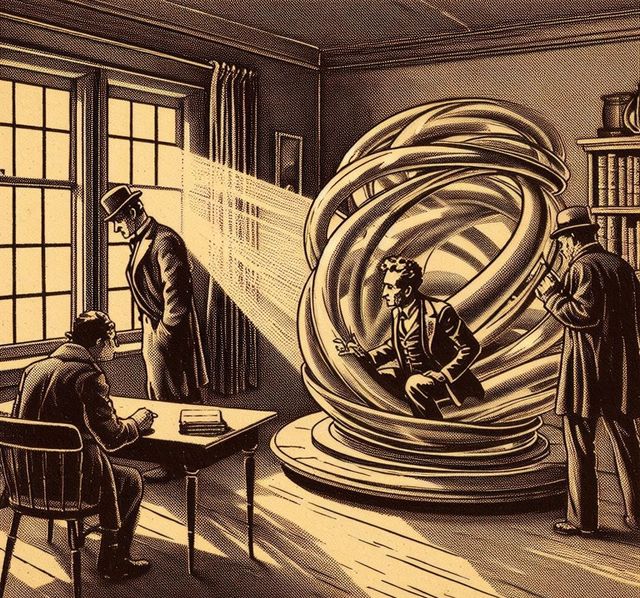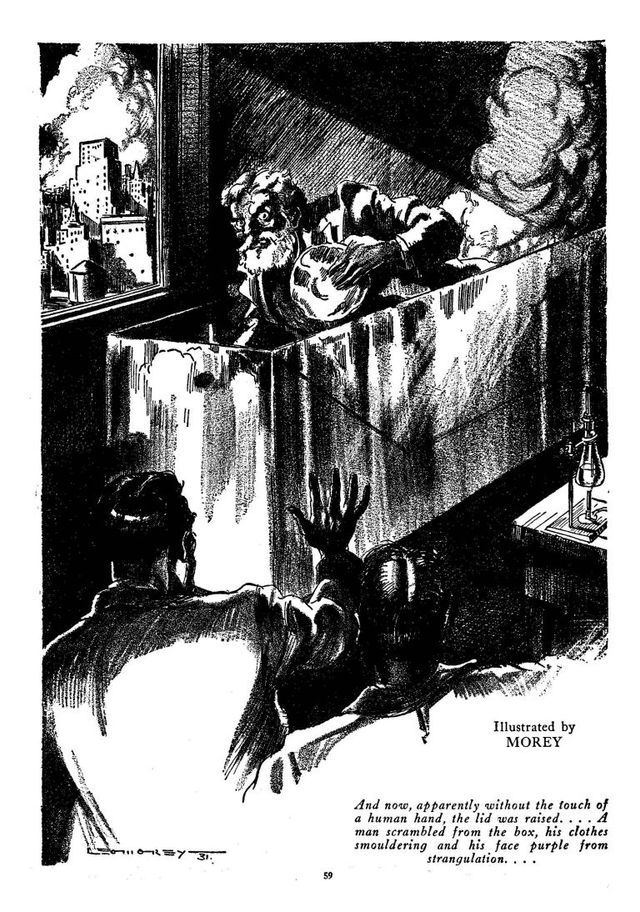-
Vijay Fafat
- Published on
A murder mystery involving a mathematical physicist. One Professor Brainard, who is claimed to have mastered “the secret of the fourth dimension” (haven’t they all in the pulps?), has a serious professional thorn in his side, a physicist named Willis (the latest barb from Willis reads, “Geometry is one of the oldest intellectual pursuits and the supposition that new properties might be discovered in the relations of curves and angles - unless one enters the impossible realm of the fourth dimension! - is hardly credible…”.)
Brainard creates a completely transparent glass cube inside which he can hide without being visible from the outside and contrives a situation wherein he can get away after murdering Willis. This is the central novelty of the story. In the end, a detective ends up opening the windows in the room holding the cube and the rays of sunlight get focused on Brainard as he hides inside the cube, causing severe burns and insanity.
The reference to fourth dimension is gratuitous and indeed, the story leaves that as an unsolved mystery. The secret to the invisibility lies in a very complicated glass plate arrangement devised by Brainard which causes light to reflect around and shield the contents of the glass box from view. The plate owes its properties to what the author describes very lyrically as:
“a geometric figure…a thing of flat curves and shallow angles, through and across which marched rows and rows of fractional dimensions that would guide the workmen in duplicating in glass the abstract thought of a mathematical mind”.
This figure was devised as Brainard
“worked in blind concentration, filling sheet after sheet with angles and curves and parades of algebraic symbols..[…] .cabalistic looking equations. These were woven in with other equations and geometric designs until at length, he seemed satisfied.”

